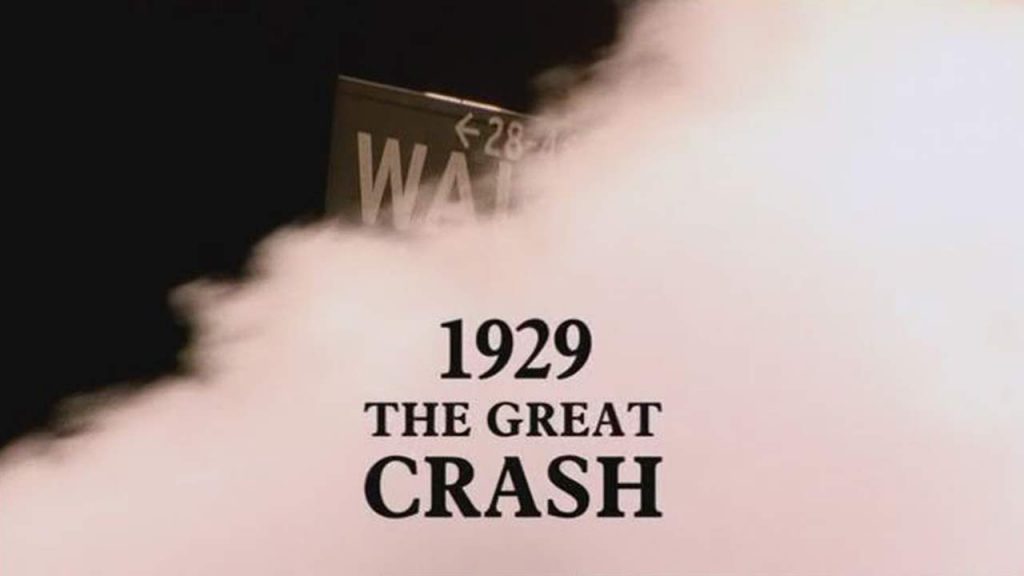1929: The Great Crash – A documentary exploring the causes of the 1929 Wall Street Crash. Over six terrifying, desperate days in October 1929, shares crashed by a third on the New York Stock Exchange. More than $25 billion in individual wealth was lost. Later, three thousand banks failed, taking people’s savings with them. Surviving eyewitnesses describe the biggest financial catastrophe in history. In 1919, the US had emerged victorious and dominant from World War One. Britain and its European allies were exhausted financially from the war. In contrast, the US economy was thriving and the world danced to the American tune.
Easy credit and mass production set the tone in the roaring twenties for an era of consumption like none that had ever been seen before. The stock market rose and investors piled in, borrowing money to cash in on the bubble. In 1928, the market went up by 50 per cent in just 12 months. The crash was followed by a devastating worldwide depression that lasted until the Second World War. Shares did not regain their pre-crash values until 1954. This is the story of a financial disaster that we hoped could never happen again.
1929: The Great Crash
The Great Crash of 1929, also known as the Stock Market Crash of 1929 or the Wall Street Crash of 1929, was a major financial crisis that occurred in the United States in late October 1929. It is considered to be one of the most significant events in modern financial history and is often seen as the start of the Great Depression, a period of economic downturn that lasted for much of the 1930s.
The Great Crash of 1929 was the result of a number of factors, including overproduction, rising debt levels, and speculation in the stock market. Many people had invested heavily in the stock market, and prices had been rising rapidly in the years leading up to the crash. However, as the economy began to slow down, investors became increasingly nervous and started to sell off their stocks. This led to a rapid decline in stock prices, which triggered a panic among investors and a rapid sell-off of stocks.
The Great Crash of 1929 had a major impact on the global economy, as it triggered a wave of bankruptcies, job losses, and economic downturn that lasted for many years. It also had far-reaching political and social consequences, as it contributed to the rise of totalitarian regimes and the outbreak of World War II. Despite the devastating effects of the Great Crash of 1929, it also marked the beginning of efforts to reform and regulate financial markets in order to prevent similar crises from occurring in the future.
The aftermath of the Great Crash of 1929 was a period of economic downturn that lasted for much of the 1930s and is known as the Great Depression. The Great Depression was a global economic crisis that had a devastating impact on countries around the world, including the United States, which was one of the hardest hit. The Great Crash of 1929 was followed by a series of events that further exacerbated the economic downturn, including bank failures, falling commodity prices, and rising levels of unemployment. As the economy continued to deteriorate, people lost their jobs and businesses went bankrupt, leading to widespread poverty and social unrest.
In response to the economic crisis, governments around the world implemented various measures to try to stimulate economic growth and reduce unemployment. In the United States, President Franklin D. Roosevelt introduced a number of programs known as the New Deal, which included measures such as public works projects, financial reforms, and social security.
The Great Depression ultimately ended with the onset of World War II, which led to a surge in military spending and a boost to the global economy. However, the effects of the Great Depression were still being felt in many countries long after the war ended, and it had a lasting impact on the global economy and political landscape.




